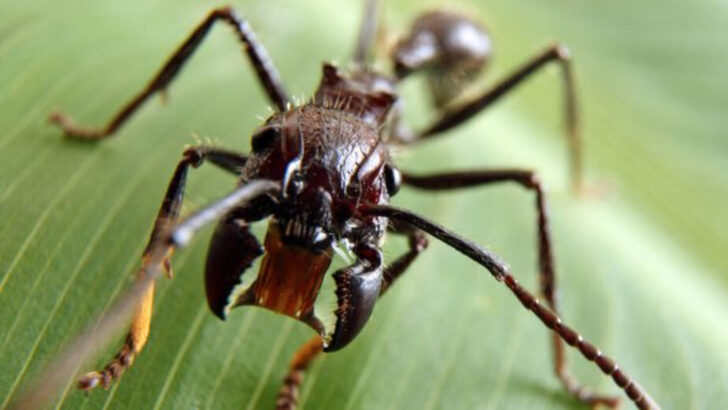Renowned for delivering the most intense sting known to humankind, the bullet ant, or Paraponera clavata, is a creature both feared and revered.
Found primarily in the rainforests of Central and South America, these ants lead intricate lives marked by fascinating behaviors and characteristics.
Known locally for their fearsome reputation, these insects play a significant role in their ecosystem.
In this article, we’ll delve into eleven intriguing aspects of the bullet ant, shedding light on what makes them one of nature’s most extraordinary insects.
The Sting

The ferocity of the bullet ant’s sting is legendary. Many who have experienced it liken it to being shot, a testament to its potency.
The pain is immediate and all-consuming, lasting up to 24 hours without reprieve. These ants use their sting as a defense mechanism, protecting their colonies with unmatched resolve. Interestingly, the venom contains poneratoxin, a peptide that affects the nervous system.
Despite its fierce reputation, the bullet ant does not seek out confrontation but reacts only when threatened. The sting is a vivid reminder of the formidable nature of this small but mighty insect.
Giant Among Ants
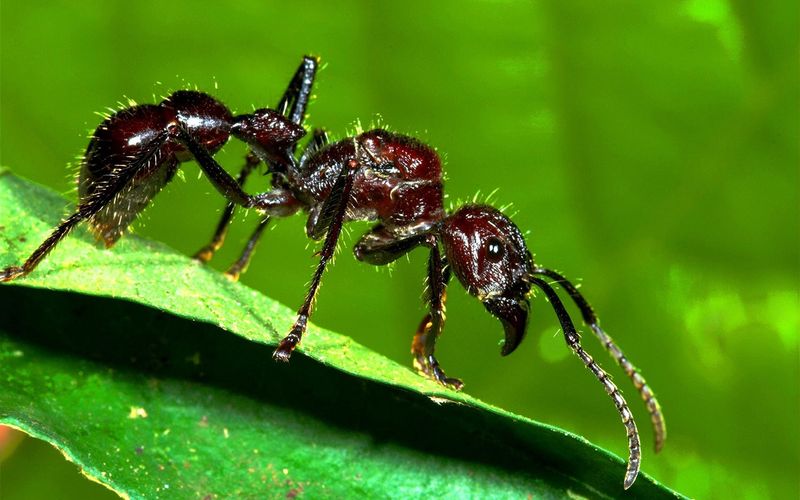
In the world of ants, the bullet ant stands out due to its impressive size. Reaching lengths of up to 1.2 inches, they dwarf many other ant species.
This size gives them a commanding presence in their rainforest homes. Their large size is not just for show; it aids in foraging and defending their territory.
Watching these ants navigate the forest floor is a captivating spectacle. Despite their intimidating stature, bullet ants remain grounded, working tirelessly to support their colonies. Their size is a testament to their adaptability and survival in the diverse ecosystem.
Cultural Significance
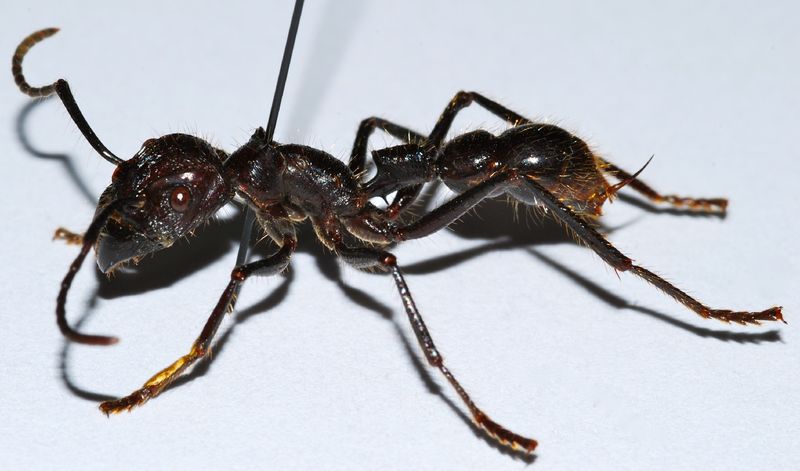
The bullet ant holds a special place in the cultures of indigenous tribes in the Amazon. Used in initiation rites, young men endure stings as a test of bravery.
This ritual signifies a transition into adulthood, showcasing strength and resilience. The ants are carefully woven into gloves, and the initiate must wear them for several minutes.
While excruciating, this practice is a powerful cultural tradition. It highlights the ant’s role beyond mere survival, symbolizing courage and the perseverance of the human spirit. This cultural link adds another layer to the bullet ant’s fascinating narrative.
Complex Social Structure
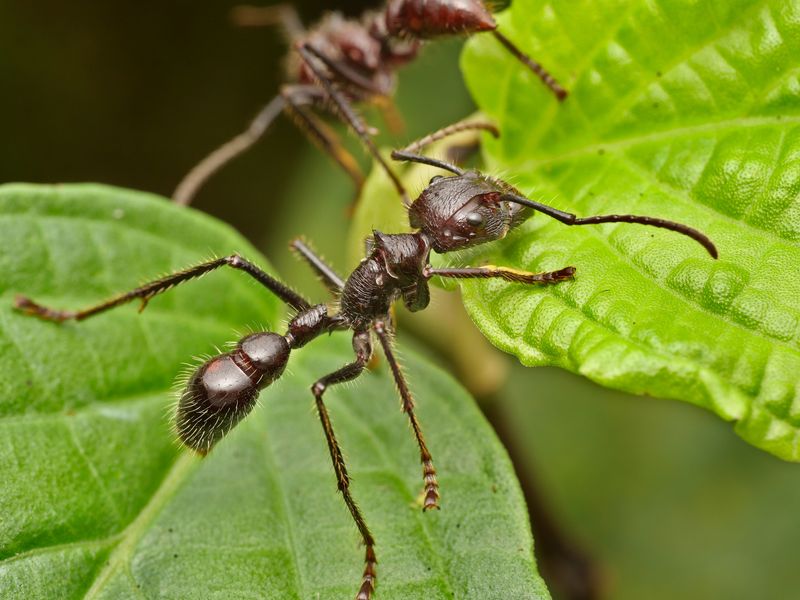
Bullet ants live in highly organized colonies, where each member has specific roles. From workers to queens, every ant contributes to the colony’s success.
Communication within the colony is complex, involving pheromones and tactile signals. These ants exhibit teamwork and cooperation, essential for survival in the rainforest. The colony thrives on a delicate balance of duties, where unity ensures longevity.
Observing these ants in action reveals a microcosm of social dynamics. Their structured society is not only fascinating but also vital to their existence. The bullet ant’s social intricacies mirror the complexities of human societies.
Habitat and Distribution
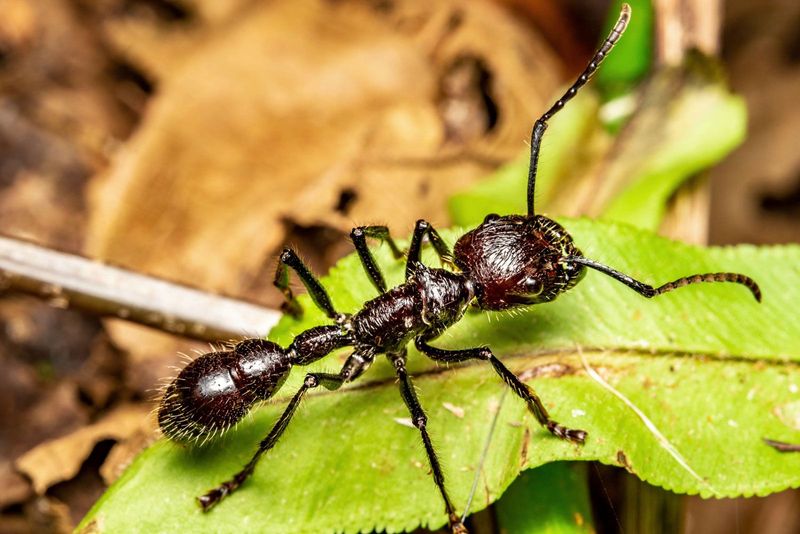
Bullet ants are native to the rainforests of Central and South America. They thrive in the humid, lush environments of these regions.
Their preference for moist, forested areas ensures they remain close to their food sources. These ants are often found on trees and shrubs, where they build their nests. The dense forest canopy provides the ideal setting for their survival, offering protection and resources.
Despite being widespread, their presence is often unnoticed until their sting is experienced. Their habitat is a testament to their adaptation to one of the planet’s most biodiverse areas.
Diet and Foraging
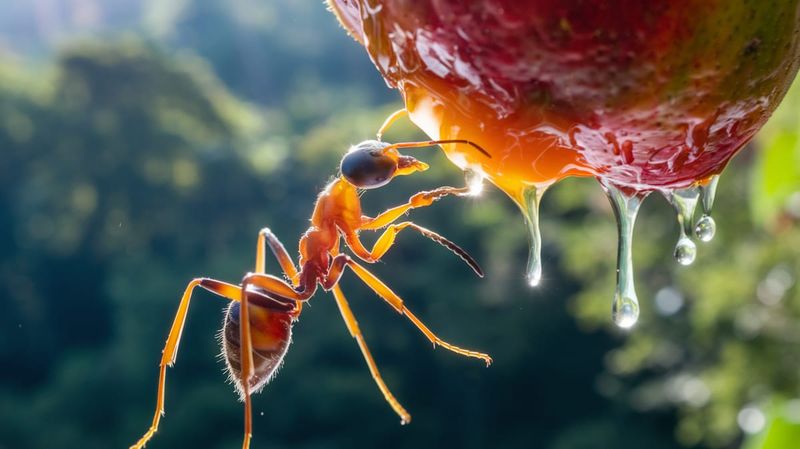
The diet of the bullet ant is diverse, comprising mainly small insects and nectar. Their foraging habits are strategic, ensuring a steady food supply for the colony.
Worker ants venture out on extensive foraging expeditions, gathering sustenance for their community. The ability to adapt their diet according to availability showcases their resilience. Their preference for nectar contributes to pollination, playing a subtle yet vital ecological role.
Observing these ants foraging offers insight into their survival strategies. Their diverse diet is a cornerstone of their existence in the challenging rainforest ecosystem.
Unique Venom Composition
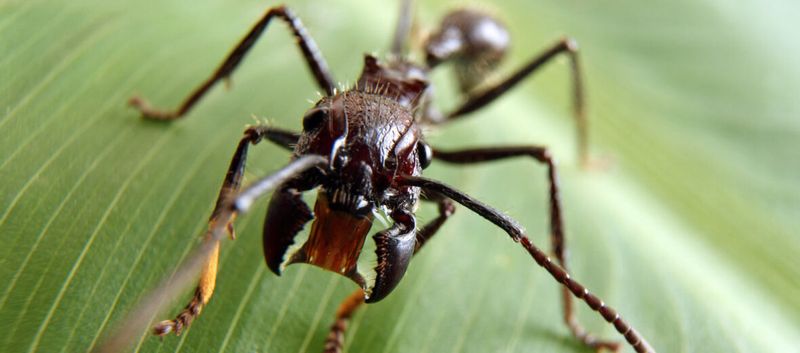
The venom of the bullet ant is a marvel of nature, containing a complex mix of compounds. Poneratoxin, the primary component, disrupts nerve function, causing intense pain.
This venom is a potent defensive tool, deterring predators with its effectiveness. Despite its pain-inducing properties, it also holds potential for medical research. Scientists study its unique composition for possible applications in pain management.
The venom exemplifies nature’s duality, being both a weapon and a source of scientific interest. Understanding its composition offers a glimpse into the evolutionary arms race within the insect world.
Predators and Threats
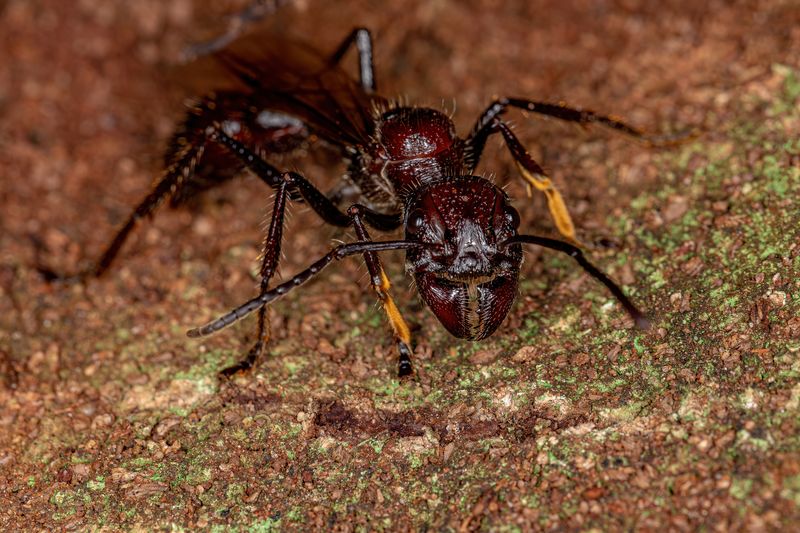
Despite their fearsome sting, bullet ants face various predators in the wild. Birds, anteaters, and other insects pose threats to their survival.
Their primary defense is their sting, deterring many would-be attackers. However, some predators have developed resistance to their venom. The balance between predator and prey is a constant challenge in their ecosystem. Observing these interactions provides insight into the natural world’s complexity.
The bullet ant’s ability to survive despite these threats showcases its resilience and adaptability. Their interactions with predators highlight the ongoing battle for survival in the rainforest.
Reproduction and Lifecycle

Bullet ants, like other ant species, have a fascinating reproductive cycle. The queen is the heart of the colony, responsible for laying eggs. Her role is vital, ensuring the colony’s growth and continuity.
Worker ants care for the young, providing food and protection. The lifecycle from egg to adult involves several stages, each critical for the colony’s future. This process is finely tuned, with each member playing a specific role.
Understanding their lifecycle offers a glimpse into the complexity of their existence. Their reproduction and growth are key to maintaining their presence in the ecosystem.
Adaptation to Environment

Bullet ants are masters of adaptation, thriving in the challenging conditions of the rainforest. Their ability to navigate and forage in dense foliage is impressive.
They have evolved to coexist with their surroundings, utilizing available resources efficiently. This adaptability extends to their social structure, allowing them to respond to environmental changes. Their resilience is evident in their continued survival despite external pressures.
Observing their interactions with the environment highlights their remarkable adaptability. Their ability to adjust to their habitat exemplifies the intricate balance of nature. This adaptability is crucial for their role in the ecosystem.
Ecological Importance
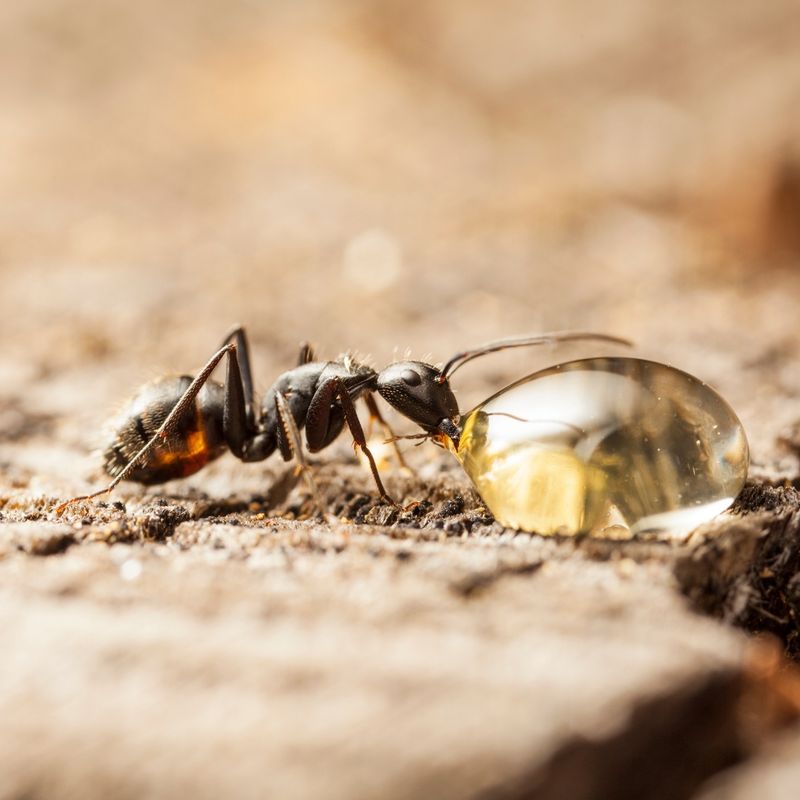
Bullet ants play a significant role in maintaining the ecological balance of the rainforest. Their activities, such as foraging and nesting, contribute to nutrient cycling.
As predators, they help control insect populations, preventing overpopulation. Their interactions with plants aid in pollination, supporting plant diversity. The presence of bullet ants is a marker of a healthy ecosystem, reflecting biodiversity.
Their role is multifaceted, influencing various aspects of the rainforest habitat. Understanding their ecological importance underscores the interconnectedness of species. Their existence highlights the delicate balance within the natural world, essential for sustaining life.

